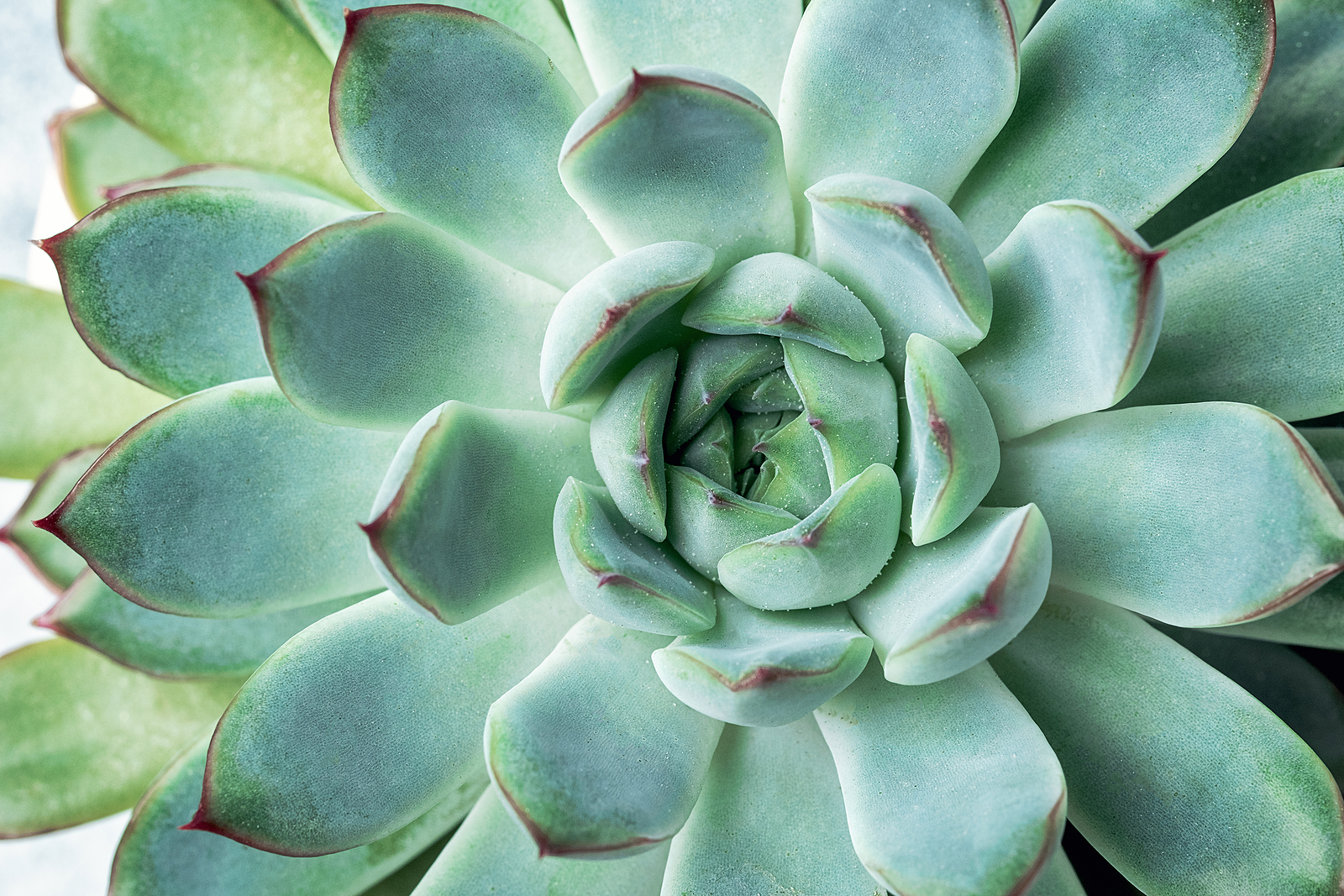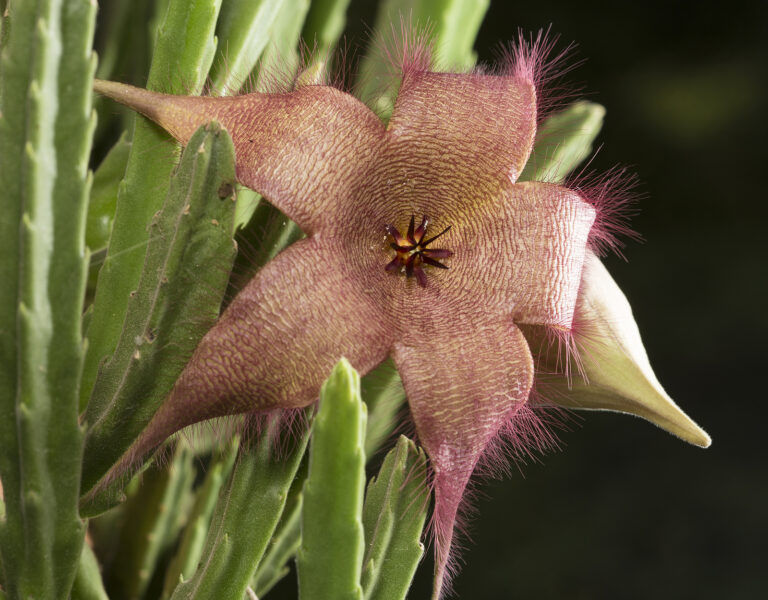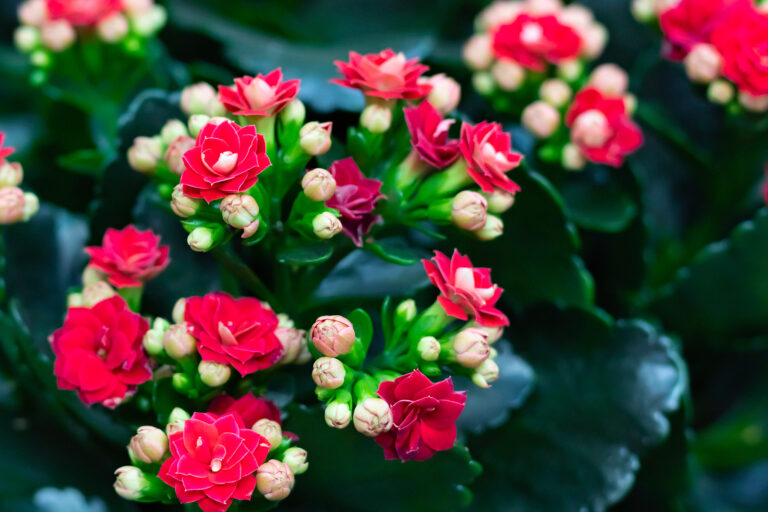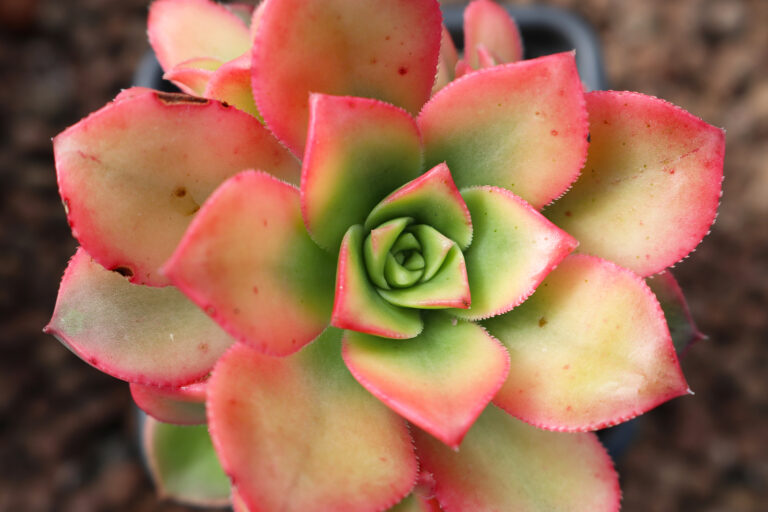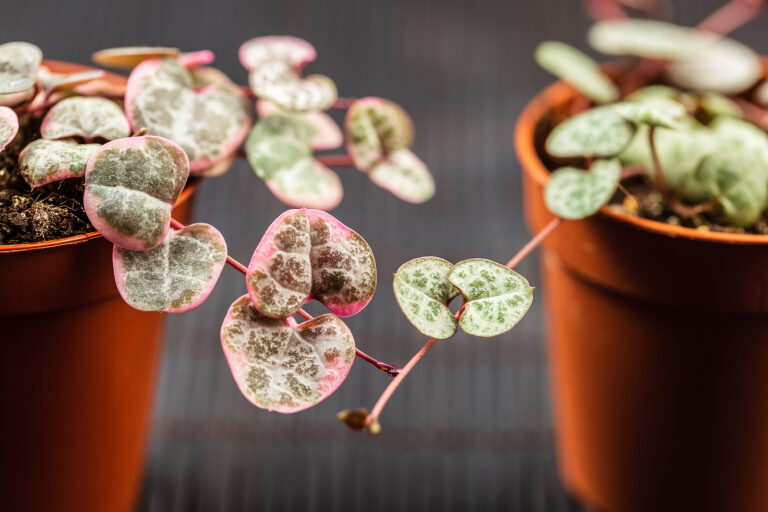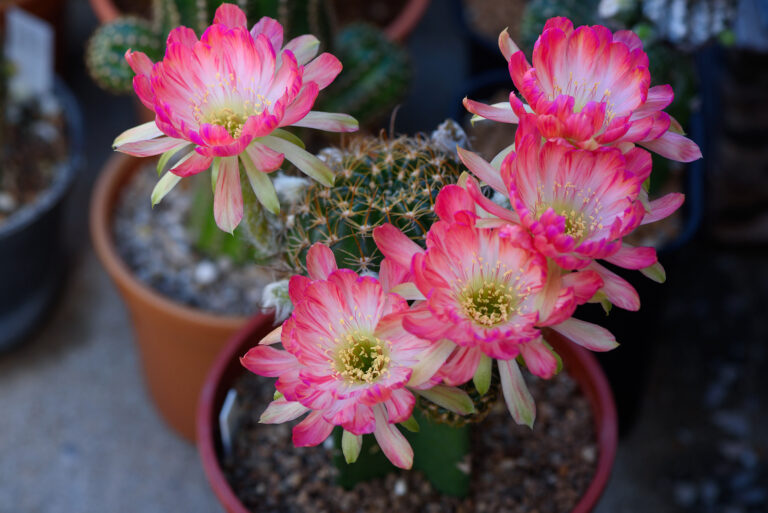Seven Beautiful Succulents to Grow Indoors
Succulents are exceptional choices for indoor gardening due to their adaptability, low maintenance needs, and diverse range of colors, shapes, and textures. Their ability to store water in their leaves allows them to thrive in environments where other houseplants may struggle, such as in dry indoor air or places where watering is often overlooked. Many succulents also have compact growth habits, making them ideal for small spaces like windowsills, desks, or shelves. With their unique forms and vibrant hues, succulents can add a touch of nature and artistic flair to any room, enhancing the décor while requiring minimal upkeep.
Here are seven succulents—Echeveria, Jade Plant, String of Pearls, Panda Plant, Living Stones, Aloe Vera, and Haworthia—well-suited for indoor cultivation because they combine aesthetic appeal with easy care requirements. Their natural drought resistance, thanks to water-storing leaves, makes them ideal for indoor conditions where humidity is typically lower and watering may be less frequent. Each variety thrives in bright, indirect light, which mimics the natural filtered sunlight found indoors, and they can tolerate some variation in light exposure, making them adaptable to different room settings. Additionally, their compact growth habits fit well in small spaces, and their unique colors and forms can complement any interior design. This resilience and versatility make these succulents perfect for plant enthusiasts of all experience levels who want to enjoy greenery without the need for constant attention.
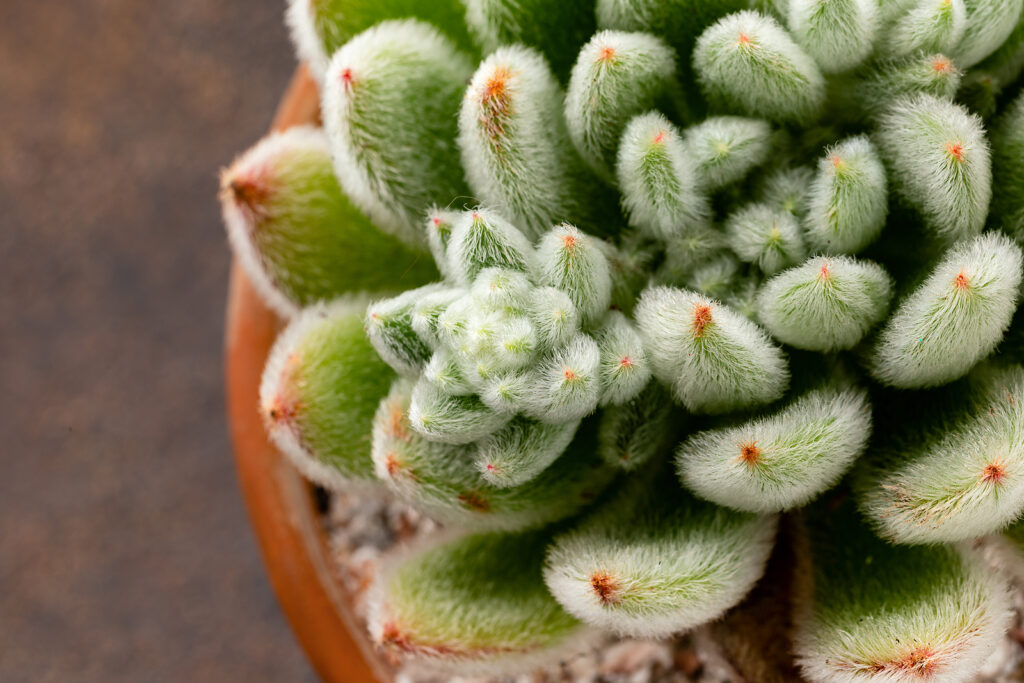
Echeveria
Echeveria succulents are renowned for their stunning, rose-like rosette shape and an array of vibrant colors that can include shades of blue-green, pink, purple, red, and even silvery hues. The leaves are typically fleshy and smooth, with some varieties having a powdery coating that gives a matte, pastel look. As sunlight exposure increases, the edges of Echeveria can become more intense in color, creating a striking contrast that adds depth to its appearance. This colorful display makes Echeveria a favorite among indoor gardeners and succulent enthusiasts.
Caring for Echeveria is relatively straightforward, making it ideal for beginners. It thrives in bright, indirect sunlight, which encourages the leaves to stay compact and colorful. Although it is drought-tolerant, Echeveria prefers a regular watering schedule during the growing season, allowing the soil to dry out completely between waterings. It grows best in well-draining succulent or cactus soil, which prevents root rot by keeping moisture from lingering around the roots. With the right care, Echeveria can flourish indoors, providing an eye-catching display year-round.
Escheveria Care Tips:
- Light: Needs bright, indirect sunlight.
- Water: Water sparingly, letting soil dry completely between waterings.
- Soil: Use well-draining cactus or succulent soil.
- Temperature: Prefers warm temperatures and should be kept above 50°F (10°C).
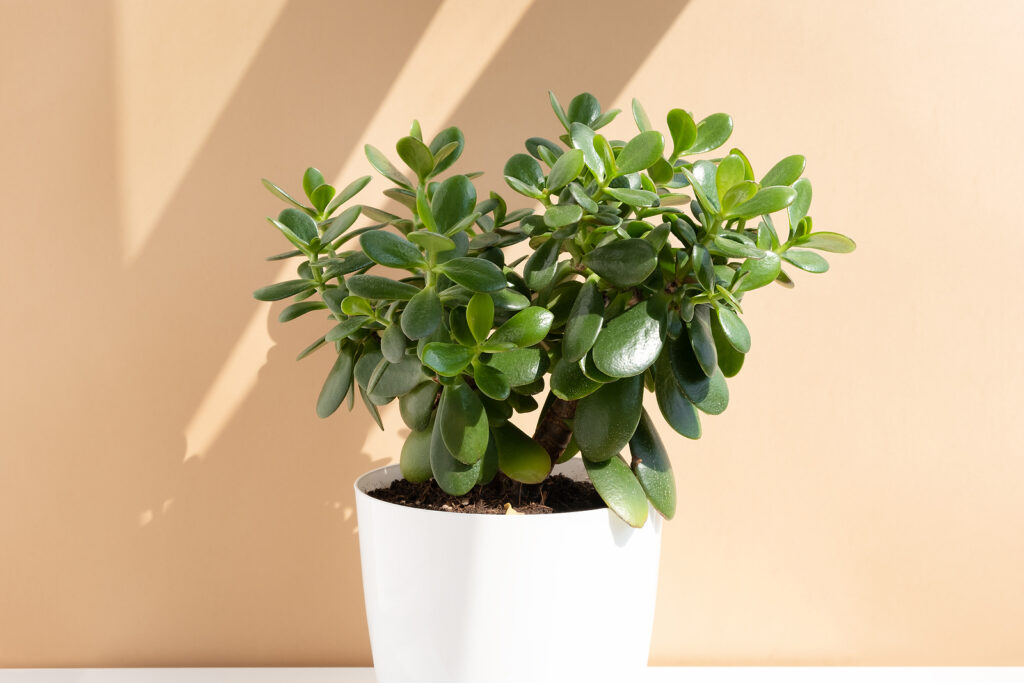
Jade Plant (Crassula ovata)
The Jade Plant, also known as Crassula ovata, is a popular succulent with thick, oval-shaped leaves that often exhibit a deep green hue with red-tinted edges when exposed to bright light. It has a tree-like structure, with a thick trunk and branching limbs, which can give it a bonsai-like appearance as it matures. Jade Plants are not only decorative but are also considered symbols of good luck and prosperity, making them popular additions to homes and offices.
Jade Plants are hardy and adaptable, preferring bright, indirect sunlight to maintain their vibrant leaf color. They can also tolerate periods of direct sunlight, especially when acclimated gradually. It is important to allow the soil to dry out completely between waterings, as Jade Plants are susceptible to root rot if overwatered. They thrive in well-draining soil and can grow for many years, even decades, when properly cared for, sometimes reaching heights of several feet indoors.
Jade Plant Care Tips:
- Light: Thrives in bright, indirect sunlight.
- Water: Allow soil to dry out before watering.
- Soil: Needs well-draining potting mix.
- Temperature: Prefers room temperatures around 65-75°F (18-24°C).
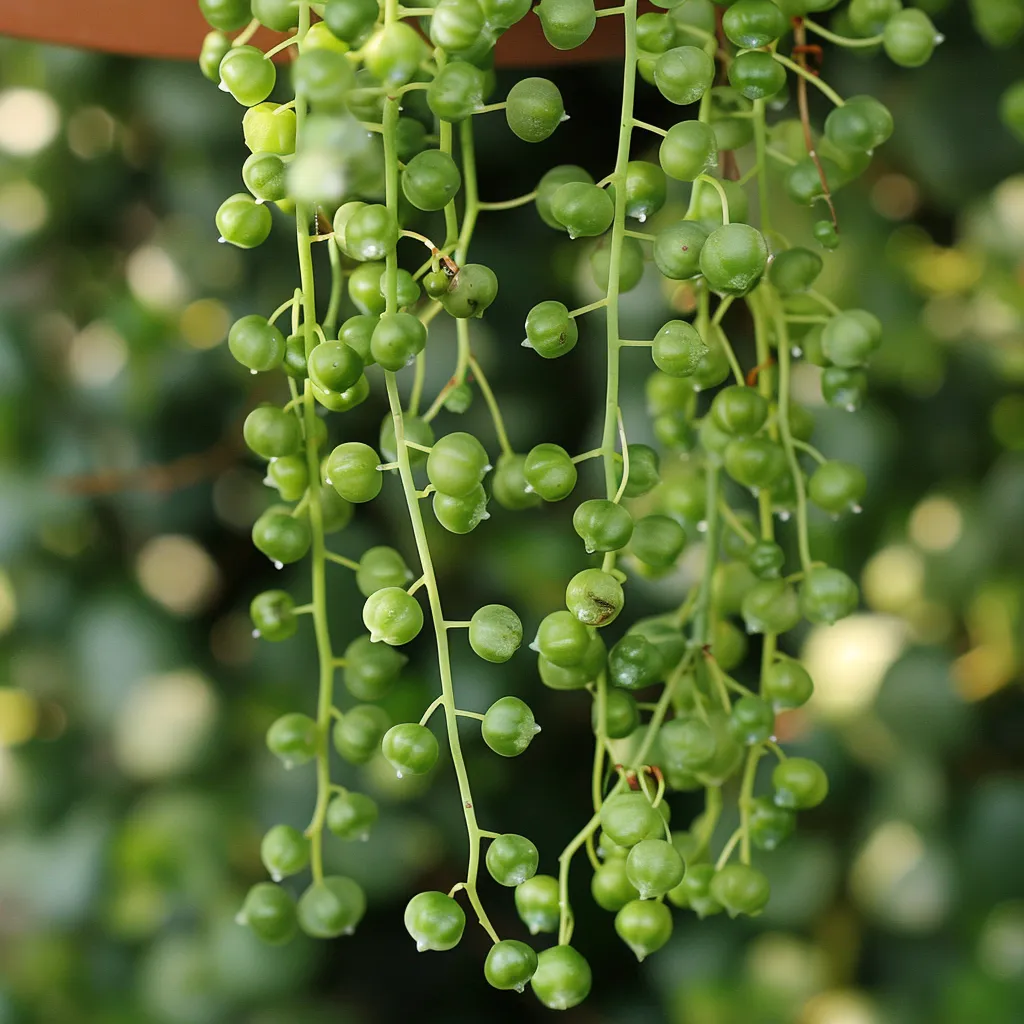
String of Pearls (Senecio rowleyanus)
String of Pearls is a unique trailing succulent known for its small, bead-like leaves that resemble green pearls strung along slender stems. The long, cascading stems make it an excellent choice for hanging pots or elevated planters, where the succulent can drape gracefully. The rounded leaves not only add an interesting texture to any plant collection but also help minimize water loss in arid conditions, making this plant well-adapted to indoor environments.
Despite its delicate appearance, String of Pearls is relatively easy to care for if you follow a few simple guidelines. It requires bright, indirect light and does best when allowed to dry out completely between waterings. Overwatering is a common problem with this succulent, so it is crucial to ensure the soil is well-draining and not waterlogged. When provided with the right conditions, the plant can produce small, white flowers with a sweet cinnamon-like fragrance, adding another charming aspect to this distinctive succulent.
String of Pearls Care Tips:
- Light: Needs bright, indirect light.
- Water: Water when the soil is completely dry, usually every 2-3 weeks.
- Soil: Use a sandy, well-draining soil.
- Humidity: Low humidity is ideal.
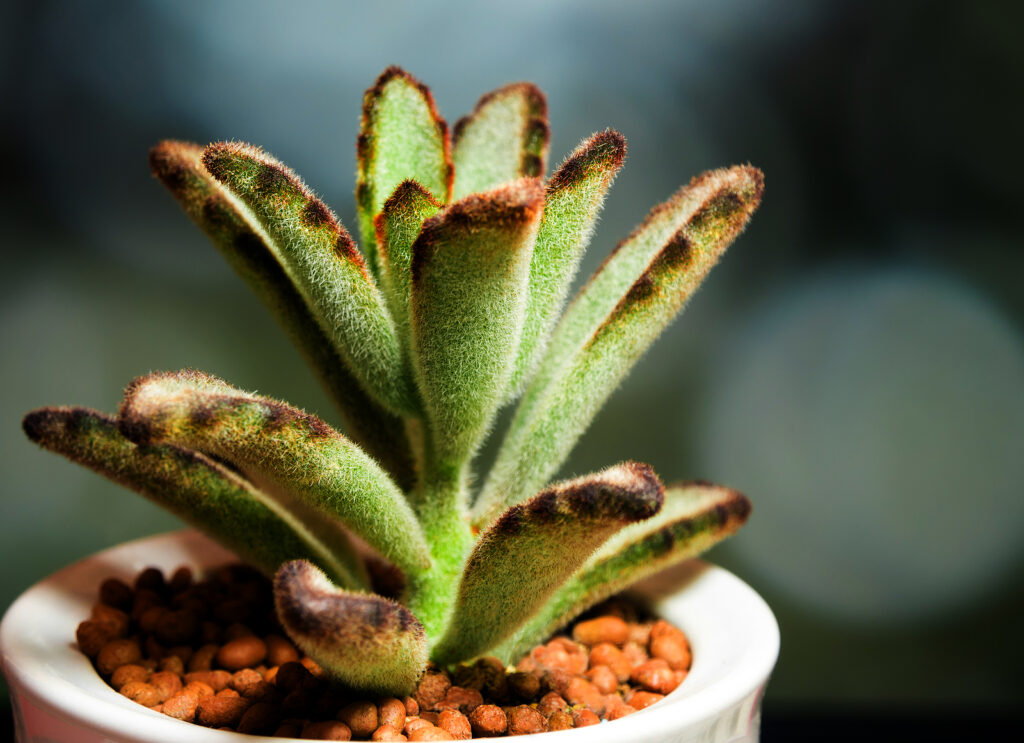
Panda Plant (Kalanchoe tomentosa)
The Panda Plant, or Kalanchoe tomentosa, is a fuzzy succulent with silvery-green leaves that are covered in fine hairs, giving it a soft, velvety appearance. The leaves are edged with reddish-brown spots, adding a striking contrast to the light-colored foliage. The plant gets its common name from the resemblance of its fuzzy leaves to a panda’s fur, making it a unique addition to any succulent collection.
This succulent prefers bright, indirect light and should be placed near a window where it can receive plenty of light without being exposed to direct sun for too long. Overwatering should be avoided, as the plant stores moisture in its thick leaves. Letting the soil dry out between waterings will help prevent root rot. The Panda Plant can adapt to various indoor environments, thriving at room temperatures and providing a touch of whimsy and texture with its furry foliage.
Panda Plant Care Tips:
- Light: Bright, indirect sunlight is best.
- Water: Water sparingly, ensuring soil dries out between waterings.
- Soil: Well-draining succulent soil.
- Temperature: Thrives in temperatures around 60-75°F (15-24°C).
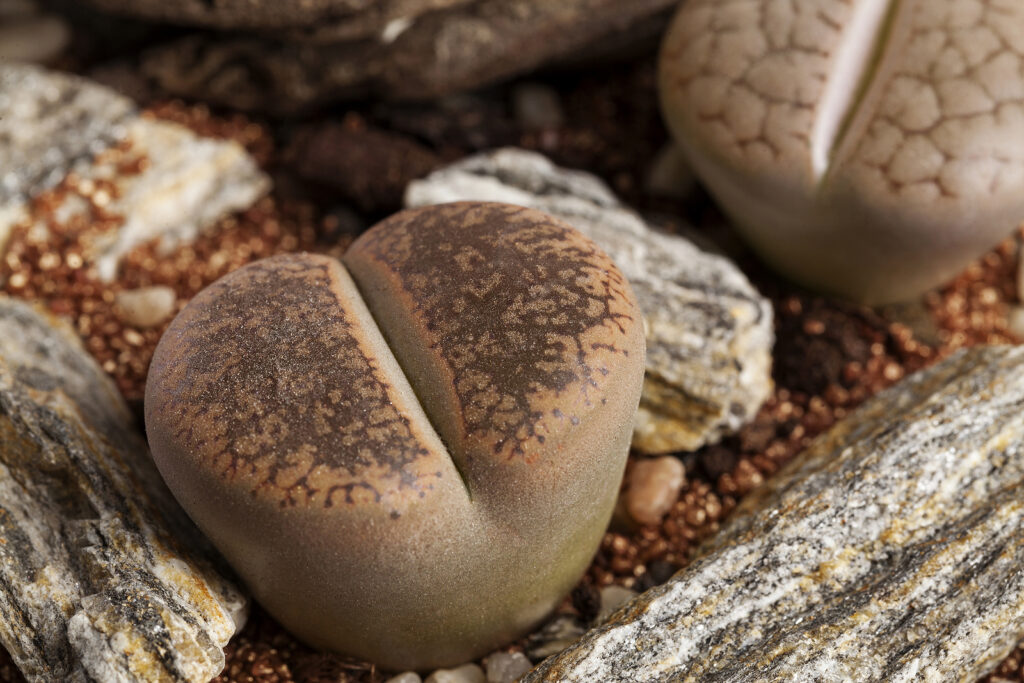
Living Stones (Lithops)
Living Stones, or Lithops, are fascinating succulents that closely resemble small pebbles or stones, blending naturally into their surroundings. This camouflage helps protect them from herbivores in their native environments. Their colors can vary widely, from grey and brown to green and pink, often with intricate patterns that mimic the look of real rocks. When in bloom, they produce beautiful daisy-like flowers that emerge from between the “stones,” offering a surprising splash of color.
Lithops are very low-maintenance but have specific care requirements due to their adaptation to arid climates. They need a lot of sunlight to thrive, typically requiring at least 4-5 hours of bright light daily. Watering should be minimal, as these succulents have evolved to store sufficient moisture in their leaves. Overwatering can be detrimental, so it’s best to water them sparingly, usually once a month. When well-cared for, Lithops can thrive indoors and make an intriguing conversation piece.
Living Stones Care Tips:
- Light: Needs at least 4-5 hours of bright sunlight daily.
- Water: Water sparingly, typically once a month.
- Soil: Use a sandy, well-draining mix.
- Temperature: Ideal range is 60-75°F (15-24°C).

Aloe Vera
Aloe Vera is a widely recognized succulent, known not only for its medicinal properties but also for its attractive appearance. Its long, fleshy leaves are filled with a gel-like substance that can be used for skin care and minor burns. The leaves are often green with white spots or streaks, adding visual interest to this practical plant. Aloe Vera can grow fairly large, but compact varieties are suitable for indoor gardening.
Caring for Aloe Vera is relatively simple, as the plant thrives in bright, indirect sunlight but can tolerate some direct sun. It prefers to be watered infrequently, with the soil allowed to dry out completely between waterings. Well-draining cactus soil is ideal for Aloe Vera, and pots with drainage holes are necessary to prevent root rot. When placed in the right conditions, Aloe Vera can grow steadily and provide both aesthetic appeal and natural remedies.
Aloe Vera Care Tips:
- Light: Prefers bright, indirect light but can tolerate some direct sunlight.
- Water: Allow soil to dry completely between watering.
- Soil: Well-draining cactus soil is ideal.
- Temperature: Thrives in temperatures between 55-80°F (13-27°C).

Haworthia
Haworthia is a genus of small, rosette-forming succulents known for their striking patterns and textures. Some varieties have translucent, “windowed” leaves that allow light to penetrate, while others display stripes or spots that add an extra dimension to the plant’s appearance. These compact succulents are ideal for small spaces and can bring a unique look to any indoor garden.
Haworthia is quite easy to care for, tolerating a range of indoor conditions. It prefers bright, indirect light or partial shade and can adapt to lower light levels better than many other succulents. Watering should be done sparingly, allowing the soil to dry between waterings, as Haworthia is sensitive to overwatering. Using a well-draining potting mix and keeping it in temperatures between 60-80°F (16-27°C) will ensure the plant remains healthy and vibrant.
Haworthia Care Tips:
- Light: Bright, indirect light or partial shade.
- Water: Water when the soil is dry.
- Soil: Requires a well-draining potting mix.
- Temperature: Does well in temperatures from 60-80°F (16-27°C).
General Succulent Care Tips
- Avoid overwatering: Succulents store water in their leaves, so they don’t need frequent watering.
- Use pots with drainage holes: This prevents water from accumulating and causing root rot.
- Rotate plants: Rotate occasionally to ensure all sides get light evenly.
Related articles:

